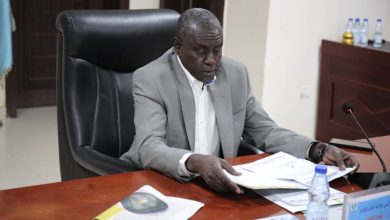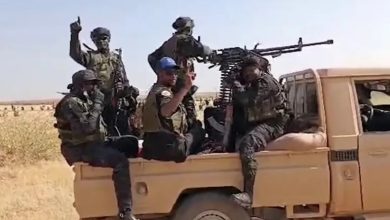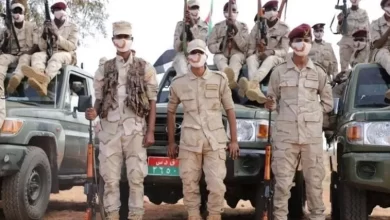War Remnants… A Daily Threat to the Lives of Thousands of Sudanese

Sudan Events – Agencies
Despite the cessation of fighting in several Sudanese states, dangers continue to haunt civilians due to the widespread presence of war remnants and landmines in neighborhoods, hospitals, and schools—posing a constant threat to lives.
Thousands of civilians who fled from villages and cities across Sudan because of the war between the army and the Rapid Support Forces (RSF) hope to return home now that military operations have ceased. However, the widespread presence of landmines, unexploded ordnance, and other war remnants has shattered the hopes of many, despite the end of direct conflict in six states: Khartoum, White Nile, Al Jazirah, Sennar, and parts of North Kordofan and River Nile.
These remnants left behind by warring factions have killed and injured dozens of civilians, including children under the age of five, in various regions of Sudan. The military operations have also caused significant damage to infrastructure, affecting even livestock such as cows and sheep in Kordofan and Al Jazirah states. Students have died inside schools due to explosive devices left by soldiers in areas like Khartoum, Al Jazirah, and Kordofan.
On May 28, four students were killed and nine others injured at Al-Fadhwa Elementary School in the village of Al-Ghabsha, near the town of Umm Rawaba in North Kordofan, after a grenade exploded. The children had found the grenade inside the school and tried to open it.
Ahmed Mohamed, a village resident, told Al-Araby Al-Jadeed: “The school had been closed since RSF forces took control of Umm Rawaba in August 2023. It reopened after the army recaptured the area and expelled RSF in January.” He added, “Due to neglect in clearing war remnants and the lack of awareness about the dangers of explosives, remnants are still scattered across villages that were battlegrounds, including in hospitals and schools that were turned into military centers and barracks. Soldiers left ammunition and explosives in classrooms, hospital wards, and among rubble near school fences.”
Regarding the student incident, he explained: “The children arrived early, as usual. While playing before the morning assembly, they found a grenade canister and tried to open it. It exploded, killing three instantly. The fourth died while being transported for treatment. Nine others were injured, and some had limbs amputated.” With no official response, he expects more children may die, saying, “Children go to school hoping to learn, but instead, they return home as torn pieces—victims of death tools hidden inside schools.”
On May 30, another war remnant exploded, injuring three children under the age of seven in a neighborhood of Umm Rawaba. They were rushed to the hospital with severe injuries. Meanwhile, villagers in Al-Jawgan, near Al-Fadhwa, discovered a large number of landmines and rockets. Lacking proper equipment, they transported them using a donkey cart to the home of the village elder. A resident said this act nearly caused a major tragedy, as the explosives could have detonated and killed many of the onlookers. He emphasized that locals have no knowledge of how to handle war remnants and that officials have not taken steps to clear them or educate the public.
In El-Obeid (west), seven civilians were killed between February and May due to various war remnant explosions. A local official, speaking anonymously, told Al-Araby Al-Jadeed that a survey of just six neighborhoods revealed 475 war remnants, with several fatalities and ten injuries among civilians. He pointed out that the remnants are widespread across urban and rural areas. “Fighting spread across the plains, villages, and cities of the state since the start of the war in Khartoum. Over two years, forces moved frequently, leaving behind unexploded ordnance and landmines. Authorities have yet to begin clearing them, which continues to cause deaths and injuries.”
In April, a landmine planted near a bridge in Al-Zandiya, a village in White Nile State, exploded and injured several residents. A local source said the area was under RSF control and is believed to contain dozens of mines, with past incidents confirming this suspicion.
Efforts by the Sudan National Mine Action Center (NMAC) seem modest when it comes to locating and clearing war remnants in Khartoum neighborhoods and under rubble. A local source said the center relies on outdated equipment from 2002, and that its capacity is far below the scale of the ongoing disaster.
A North Kordofan state official confirmed that NMAC has not deployed teams to search for explosives in several states, including North Kordofan. “The center only works in Khartoum and has neglected other states,” he said.
In contrast, NMAC director Major General Khaled Hamdan stated that Khartoum, which witnessed the fiercest battles between the army and RSF, has recorded many landmine and explosive incidents, killing numerous civilians, including children. He reported that the center documented 40 explosions caused by landmines and war remnants, resulting in 66 victims, including children. He also mentioned 16 civilian deaths from explosives not officially reported and noted that such incidents occurred in Khartoum, Hajar Al-Asal (River Nile), Al Jazirah, and Sennar, with more expected elsewhere. Hamdan warned that landmines and remnants are spread across Khartoum’s northern suburbs, Al Jazirah, and Sennar, and that the danger is especially high due to their presence in densely populated urban areas.
The center is working urgently to collect remnants to allow residents to return to normal life. It has removed more than 13,000 war remnants in Omdurman, 7,000 in Al Jazirah, and 3,000 in various locations. Hamdan said that before the war, landmines were found in 11 out of Sudan’s 18 states. Now, they are present in every state.
Sudanese civilians face a bleak future due to the widespread presence of landmines and war remnants in cities and villages. Their suffering is expected to continue for years. According to Mutaz Abdel Qayoum, Director of Country Support for Mine Action in Sudan, clearing an area like the capital may take about ten years of dedicated work. He cited examples of landmines still present in eastern Sudan from World War II. He told Al-Araby Al-Jadeed: “Before the war, there was an official landmine map for Sudan. That map has now disappeared—we are dealing with a new one. The upcoming period will be dangerous for civilians.”
Abdel Qayoum attributes delays in mine clearance to weak institutional capacity and added that removing unexploded ordnance is extremely expensive, especially since it is now scattered across all Sudanese states. “Sudan will not be able to overcome these threats without forming strong, genuine partnerships with international organizations to help clear villages, cities, and rural production areas of explosives,” he concluded.



